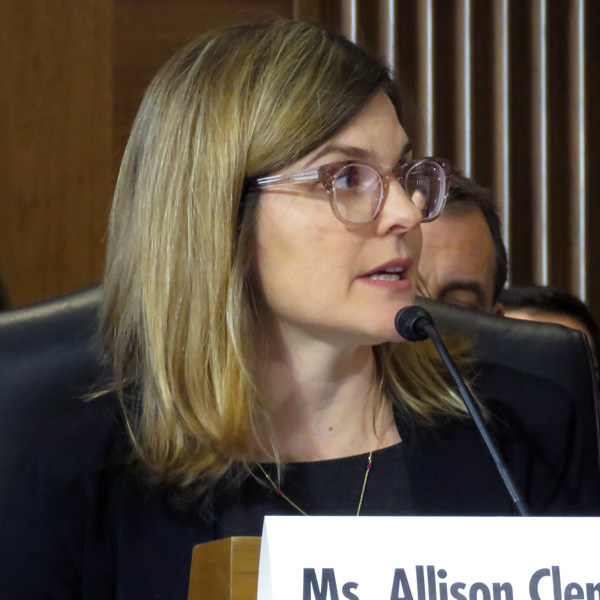FERC rejected two different challenges related to its decision in December regarding end-of-life (EOL) transmission projects in PJM, keeping its original ruling in place.
Though it ended up modifying its original order, the commission still denied a rehearing request by a group of PJM stakeholders concerning its December order (ER20-2308-001). FERC also dismissed a complaint filed by Duquesne Light Co. that requested the commission to prevent PJM from submitting proposed amendments to the Operating Agreement the RTO deems to be unlawful (EL20-59).
In December, the commission rejected a stakeholder proposal to move EOL projects under the RTO’s planning authority, siding with transmission owners who argued that it would violate their rights (ER20-2308). (See FERC Rejects PJM Stakeholder EOL Proposal.) FERC said the proposal, initiated by American Municipal Power (AMP) and Old Dominion Electric Cooperative (ODEC) and passed by the PJM Members Committee in June 2020, went “beyond the scope of planning responsibilities” delegated to the RTO.
The proposal created lengthy and heated debates among stakeholders and a protest by the TOs, who claimed in a letter and discussions that the amendments violated their rights under the Consolidated Transmission Owners Agreement (CTOA). (See PJM Stakeholders Endorse End-of-Life Proposal.) The commission accepted the TO sector’s own tariff amendments concerning EOL projects in August 2020, rejecting arguments in rehearing requests by more than a dozen load-side stakeholders (ER20-2046). (See FERC Accepts PJM TOs’ End-of-life Revisions.)
Rehearing Denied
In the rehearing request, the stakeholder group argued that the commission erred in its December ruling by “reading the CTOA too narrowly in finding the provisions delegating to PJM rights to plan ‘enhancements’ and ‘expansions’ of the PJM system did not cover ‘replacement decisions’ such as EOL projects.” It said the regional planning obligations delegated to PJM through the CTOA is “broad enough” to consider EOL projects.
It also argued that the proposal “respected the PJM transmission owners’ retained rights to make decisions to maintain and retire transmission assets” and that the commission’s “narrow reading” of the CTOA “rendered meaningless PJM’s regional planning authority over ‘enhancements’ to the transmission system.”
FERC said the “central question” to the proceeding was whether the TOs delegated consideration of EOL projects to the RTO under the CTOA. The commission said that upon further consideration, it found the CTOA to be “ambiguous regarding whether consideration of EOL projects was a matter delegated to PJM.”
“Consideration of EOL projects is not directly addressed in the CTOA,” FERC said in its ruling. “Rather, as discussed in the December 2020 order, under the CTOA, PJM is limited to ‘conduct[ing] its planning for the expansion and enhancement of transmission facilities,’ while the PJM transmission owners retain the right to ‘maintain’ their transmission facilities, the right to determine when facilities should be retired and any rights that are not ‘specifically transferred’ to PJM.”
FERC said several relevant terms, including “expansion” and “enhancement,” are not defined in the CTOA, but that the terms “enhancement of transmission facilities,” “maintain” and “retire” can “reasonably be read to reserve consideration of EOL projects to the PJM transmission owners.”
“Viewed through the lens of the general reservation providing that the PJM transmission owners gave up only those rights ‘specifically transferred’ to PJM, we are not able to conclude that the CTOA provides for the transfer of responsibility for the consideration of EOL projects,” the commission said in its ruling. “Indeed, the clarity and specificity with which the CTOA parties addressed other issues, particularly responsibility for rate design, further demonstrates that the CTOA does not clearly indicate whether the PJM transmission owners ‘specifically transferred’ responsibility for the consideration of EOL projects to PJM.”
But the commission said it continued to disagree with the group’s interpretation of the CTOA, stating the goal of the interpretation of an agreement is to “decipher the intent of the parties to the contract.”
“Here, the signatories to the contract are PJM and PJM transmission owners, and the wording of the CTOA read in light of extrinsic evidence suggests they did not intend for PJM transmission owners to delegate consideration of EOL projects to PJM,” FERC said in its order. “At the time the CTOA was signed, the status quo was for the PJM transmission owners to retain responsibility for EOL projects.”
Concurring, but Differing, Opinions
The order elicited strongly worded concurrences from two commissioners.
Commissioner James Danly said he agreed that the stakeholder group’s request for rehearing should be denied, but he said he disagreed with FERC’s clarification, specifically that the CTOA is “ambiguous” as to which parties have the responsibility for EOL projects.
“There is no ambiguity regarding whether the PJM transmission owners delegated authority over ‘end-of-life’ or ‘replacement’ decisions to PJM,” Danly said. “PJM transmission owners retained the right to ‘maintain’ or ‘retire’ their facilities. While PJM transmission owners delegated ‘planning for the expansion and enhancement of transmission facilities’ to PJM, a decision to replace an existing facility is not an ‘expansion’ and would only be an ‘enhancement’ in the limited sense of extending the useful life of the transmission facility.”
Danly said it was wrong for the commission to “resort to extrinsic evidence when the contract language is unambiguous” and that the language could open a “Pandora’s box that could undermine even further the incentives the PJM transmission owners have to remain in PJM.
“Now that we have found the Consolidated Transmission Owners Agreement to be ambiguous, we have arrogated to ourselves the power to ‘interpret’ that agreement in the future to take away rights that the owners unambiguously reserved to themselves,” he continued. “I can imagine that power becoming a sore temptation down the road. While the ultimate outcome in this case is correct, the path by which the majority arrives at its decision is not. I guarantee the PJM transmission owners will take note.”

While also concurring, Commissioner Allison Clements took the opposite opinion of Danly, saying the order misinterpreted the CTOA “in a manner that inappropriately constrains the commission’s authority to ensure cost-effective, holistic transmission system planning in the PJM region.”
Clements said rejection of the proposal and rehearing request was warranted only because it “painted with too broad a brush advancing an amendment to the PJM Operating Agreement that would require PJM to plan for both regional and certain local EOL projects.” Clements said the CTOA “clearly grants authority to PJM to plan for regional EOL projects,” but it is “ambiguous” regarding local EOL projects.
She said arguments made by the TOs that building entirely new facilities to replace old ones constitutes “maintenance” was a “bald assertion” and lacked “common sense.”
“When a decision is made to retire and replace something, the act of preservation ends,” Clements said. “When a driver sends an old car to the junkyard and buys a new one, no reasonable person would ever say such an action is ‘maintenance’ of the junked car, even if the new car is the same or a similar model.”
FERC’s decision is “highly consequential,” Clements argued, because EOL projects in PJM are set to become a significant portion of new infrastructure projects because of the RTO’s aging transmission system. It will allow TOs to retain authority over regional EOL projects in PJM “so long as they plan to exactly replace those facilities.” She said a holistic assessment of the grid needs to be considered to ensure customers do not overpay and have PJM retain the responsibility for planning the grid with regional benefits.
“While transmission planning reform can and must continue to better ensure the development of a grid that cost-effectively serves customers, today’s order is unfortunately a step in the wrong direction at a time when more holistic, forward-looking transmission planning is desperately needed,” Clements said.
Duquesne Challenge
Duquesne requested last year that FERC direct PJM to refrain from filing amendments to the OA that the RTO has determined violate the CTOA. Duquesne said PJM must comply with the Federal Power Act and may not “circumvent” contractual obligations under the CTOA by “unilaterally filing with the commission amendments that are ‘inconsistent with those obligations.’”
PJM originally filed additional comments after it filed the EOL proposal in July 2020, saying it believed the proposal violated its governing documents and commission precedent on the RTO’s and the TOs’ roles in transmission planning. (See PJM Files EOL Proposal over TO Protest.)
PJM and stakeholders filed motions to dismiss Duquesne’s complaint, with the RTO saying an approval of the request “would bar future filings pursuant to Section 205 of the FPA by PJM that an individual transmission owner may argue violates the CTOA in ways not specified or that violate commission precedent in ways not explained.”
They also argued the complaint was “speculative and premature and that Duquesne has failed to identify any issue that is ripe for review.” The RTO contended that the best course of action was to “present to the commission its views on the stakeholder proposal so that the commission could resolve the legal conflict regarding the validity of the proposal.”
FERC ultimately granted to motion to dismiss Duquesne’s request.
“We see no general obligation for PJM to prejudge the legality of a particular filing before determining whether to make that filing either on behalf of the members or the PJM transmission owners,” the commission said. “The onus of determining the legality of a filing falls on the commission, and PJM’s evaluation of the merits of a filing should not operate to bar PJM from making a filing before the commission from the PJM transmission owners or on behalf of the members.”



